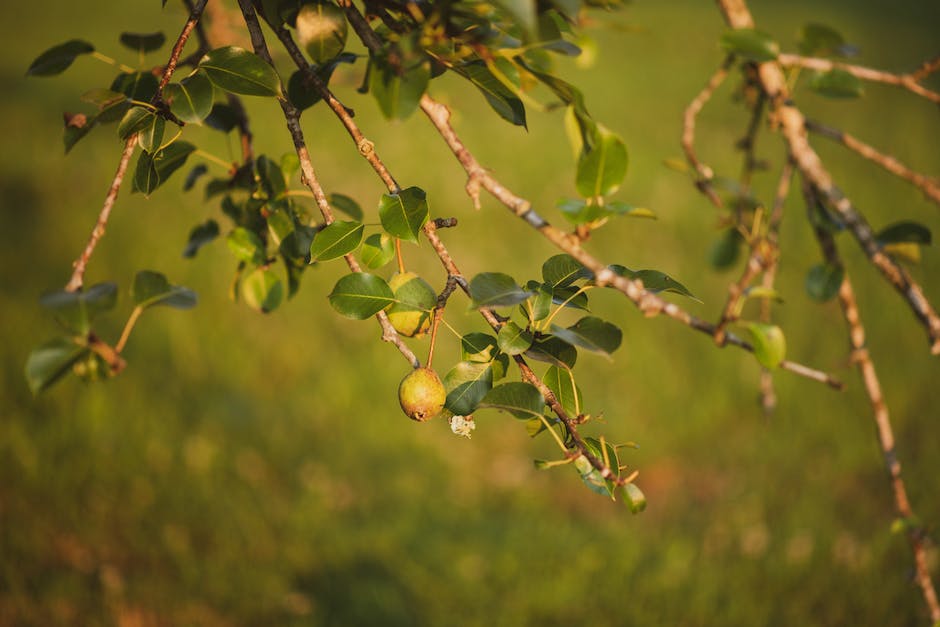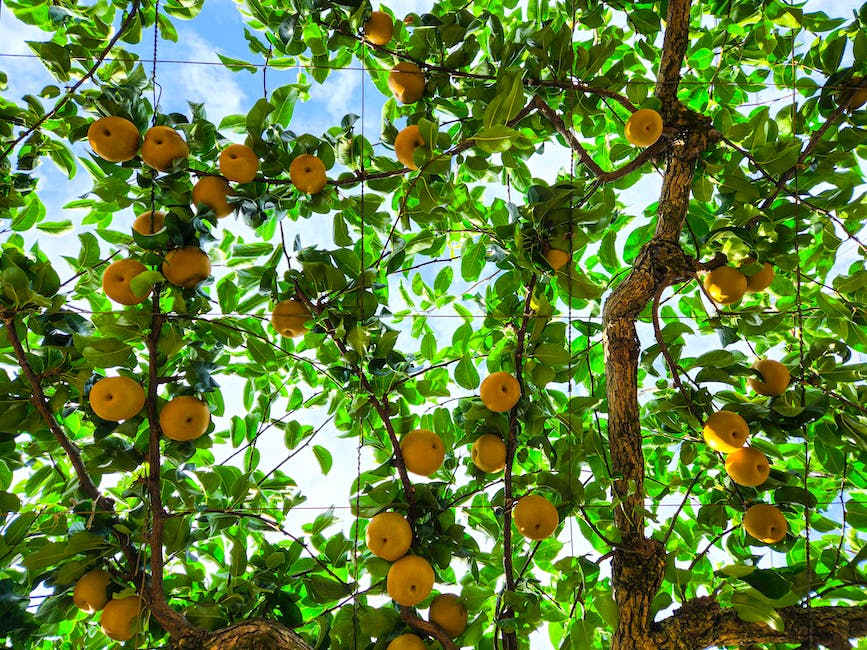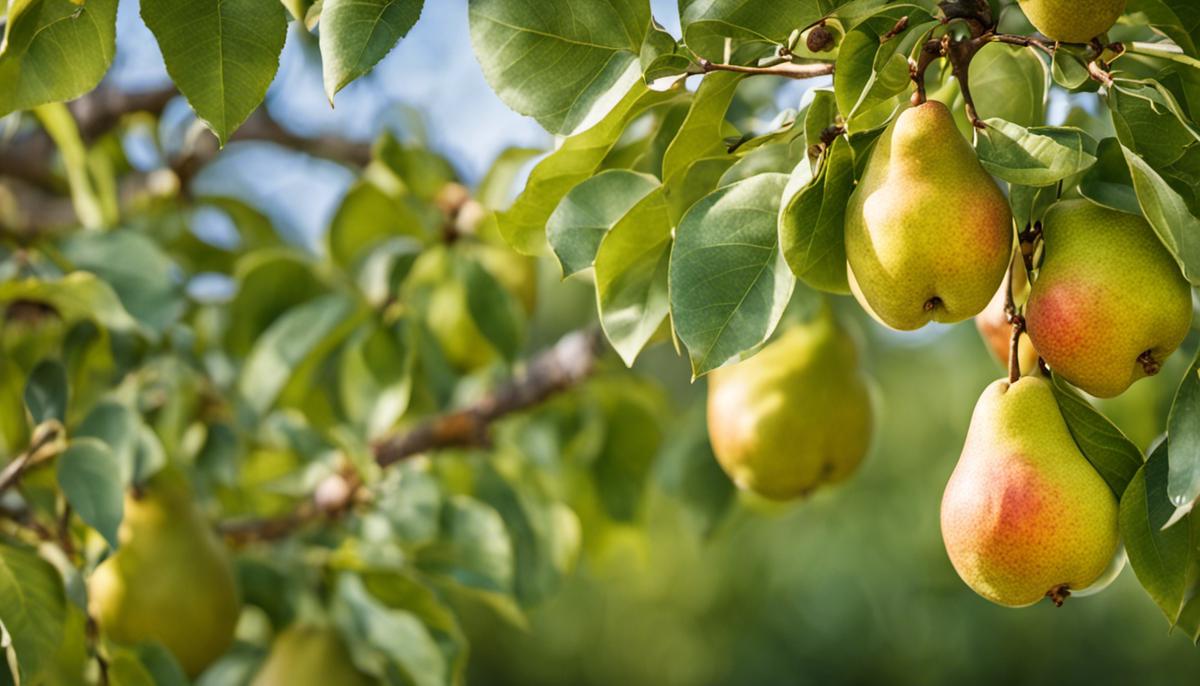Delicate, sweet, and wonderfully refreshing, pears are fruits that grace us with their presence once every year. However, the process that leads to the flourishing of these delectable fruits is a fascinating journey of growth, maturity, and the right care.
The road from seed to fruit is very meticulous, with pear trees beginning to bear fruit usually around their fourth year. But, it’s typically in their seventh year when their true production potential shines through.
To understand the uniqueness of pear cultivation, we delve deeper into the life cycle of pear trees, and their fruit bearing capacity influenced by factors such as environment, care and maintenance, and their inherent biological structure.
How often do pear trees bear fruit
Understanding Pear Tree Life Cycle
The life cycle of a pear tree begins with planting a seed or a young tree. Depending on the chosen method, the timeline for fruit-bearing will differ. Planting a young pear tree, typically 1-2 years old, is a common choice for quicker harvests. Once planted, proper care and optimal growing conditions are necessary to promote healthy growth.
Seedling to Young Tree Stage
The initial stage known as the seedling or sapling stage lasts for about one to two years as the pear tree first establishes itself. In this period, the tree is focusing on forming strong roots and producing foliage but does not bear fruit.
Juvenile to Mature Tree Stage
Following the sapling stage, the pear tree enters its juvenile phase, which typically lasts until its third year of growth. During this time, the tree continues to focus its energy on becoming taller and developing a broader canopy but still does not produce any fruit.
Fruit Bearing Stage
From the fourth year onward, the pear tree begins to enter its fruit bearing stage. It’s important to note that the quantity of fruit will still be limited in the early years of this stage. The tree’s energy is now “divided” between continued growth and maintenance, and the production of flowers and fruit.
Peak Production Stage
In the seventh year and onwards, a pear tree has usually reached its mature stage. At this point, assuming it is healthy and growing in ideal conditions, the tree should reach its maximum fruit production capacity. During this mature stage, annual pruning, fertilization, and careful disease management are crucial to ensure high yields of fruit each year.
Factors Influencing Pear Tree Fruit Stages Production
To produce fruit, pear trees need plenty of sunlight, sufficient water, and good soil. Annual pruning helps to enhance fruit production by limiting overly vigorous growth and focusing the tree’s energy more toward fruit production. Automated irrigation systems can also ensure that your pear tree gets the right amount of water.
In addition, pest and disease management is crucial. Pear trees are susceptible to various diseases such as fire blight, pear scab, and pear rust, so it’s important to regularly check your tree’s health and intervene early if you spot any symptoms. A healthy, well-cared-for pear tree can continue to bear fruit for many years.
Remember, even if you provide the best care, the exact time when a pear tree starts to bear fruit and the volume of its production can vary slightly due to individual tree characteristics and external conditions.

Fruit Bearing Frequency
Understanding the Fruit Bearing Cycle of a Pear Tree
Pear trees, like most fruit trees, have a distinct cycle of bearing fruit. This cycle largely depends on many factors, including the tree’s age, its overall health, and the environmental conditions where it lives. Pear trees typically begin producing fruit when they are between 4 to 6 years old. However, it is important to remember that the fruit quality may not be satisfactory until a couple of years of fruiting have passed.
Annual Fruit Bearing Frequency of Pear Trees
Pear trees are generally known to bear fruit once a year. This usually occurs during late summer to early fall, making pears a popular fruit during these seasons. It’s also worth noting that the amount of fruit a pear tree produces can vary each year, and a tree may produce a lot of fruit one year and very little the next.
Influences on the Pear Tree’s Fruit Bearing Frequency
While the frequency of pear fruiting is primarily annual, various factors can influence it. These include climate, soil fertility, adequate watering, and proper pruning. Pear trees require climates with cold winters and warm summers, as the cold period aids in their blooming process. Without these conditions, the tree may struggle to flower and consequently produce fruit.
Effect of Variety and Climate on Pear Trees
Different varieties of pear trees may also bear fruits at different times of the year. For instance, European pear trees tend to produce fruit later in the season, while Asian pear trees often produce earlier. The climate also plays a pivotal role in fruit production. A pear tree planted in a location with a milder climate will generally bear fruit earlier than a tree planted in a cooler region.
Proper Practices for Ensuring Healthy Fruit Production
Proper tree care practices also influence the tree’s ability to produce healthy fruit regularly. These include appropriate pruning to maintain the tree’s shape, fertilization to provide necessary nutrients for growth and fruit production, and pest management to protect the tree. Pruning should be done annually during late winter or early spring when the tree is still dormant. Regular fertilization, particularly during the growing season, can greatly influence fruit production.

Maintaining Pear Trees for Optimal Fruit Production
Understanding Pear Tree Needs
Pear trees, like any other fruit trees, require careful attention and specific conditions to bear fruit. Whether you’re growing a European or Asian variety, it’s important to consider the needs of the pear tree. Pear trees need well-drained loamy or clay soil with a pH between 6.0 and 7.0. This means that the soil isn’t too acidic or too alkaline, creating a balanced environment for the tree. Check your soil’s pH level and amend it if necessary.
Sunlight and Watering
Pear trees require plenty of sunlight – at least six hours per day for optimal results. This exposure ensures that the tree receives enough energy to produce fruit. When it comes to watering, these trees require a steady medium amount. It’s crucial to maintain an optimal schedule, especially for younger trees. Over or underwatering can lead to various diseases and hinder the tree’s growth and fruit production.
Pruning Pear Trees for Fruit Production
Pruning plays a crucial role in a pear tree’s fruit production. It helps to maintain the tree’s shape, promotes better sunlight exposure, and prevents diseases. The best time to prune a pear tree is late winter or early spring just before the new buds form. Remove any dead or diseased branches and trim back overly long branches for a better shape.
Maintaining the Health of Your Pear Tree
Fertilizing your pear tree is an important factor in maintaining the tree’s health and aiding in fruit production. Use a balanced fertilizer with nitrogen, phosphorus, and potassium, along with some necessary micronutrients. Fertilizers boost the tree’s health, but avoid over-fertilizing as it would lead to excessive leaf growth at the cost of fruit production.
Preventing Diseases and Pests
Pear trees can be susceptible to several diseases and pests. Consider spraying a dormant oil in the late winter or early spring to avoid insect issues. Regularly inspect your tree for any signs of disease, like blackened spots or foliage discoloration. Reach out to a local agricultural extension service for assistance with pear trees disease identification and treatment options.
Overall, maintaining a pear tree requires some effort, but with the right care and treatment, it’s a rewarding task. These techniques ensure healthy trees that produce fruit annually.

Mastering the art of pear tree cultivation does not just end at understanding their growth cycle and when they bear fruit. The high yield of quality pears also has a lot to do with how they are nurtured and maintained.
Factors such as soil quality, sunlight conditions, and pruning play a critical role in a tree’s ability to bear fruit annually. Getting a full-fledged pear tree, ready with ripe, juicy fruits in your backyard isn’t happenstance, but the result of the right alignment of growth stages and persistent, gentle care.
Although pear trees’ fruit bearing frequency garners much fascination, it’s their journey from a budding seedling to a mature, fruit-bearing tree that truly tells the tale of their unique life cycle.
FAQ
What time of year do pear trees produce fruit?
Pear trees typically produce fruit in the late summer to early fall, depending on the variety and the climate of the region. This is usually from August to October in most temperate regions.
How do you encourage pear trees to fruit?
To encourage pear trees to fruit, you need to provide the right conditions for healthy growth, flowering, and fruit development. Here’s a summarized list of steps to follow:
Proper Pruning: Prune your pear trees to promote good structure, remove dead wood, and improve air circulation. Pruning also encourages new growth, which can lead to more flower buds. Prune during the dormant season (late winter or early spring).
Pollination: Plant at least two different pear tree varieties that bloom at the same time or have overlapping flowering periods. This cross-pollination is often necessary for fruit sets. Bees and other pollinators are essential for transferring pollen between flowers.
Planting Location: Choose a sunny location with well-draining soil for optimal growth and fruiting. Good sunlight and air circulation help prevent disease and promote flowering.
Soil Preparation: Prepare the soil by adding organic matter and ensuring proper drainage. Conduct a soil test to identify and address nutrient deficiencies.
Fertilization: Apply a balanced fertilizer with higher phosphorus and potassium content in early spring. These nutrients support flower and fruit development. Follow recommended rates.
Watering: Keep the soil consistently moist, especially during flowering and fruit development. Use drip irrigation or soaker hoses to avoid wetting the foliage and minimize disease risk.
Thinning Fruit: After fruit sets, thin young fruits to allow space for healthy growth. This prevents overcrowding and results in larger, better-quality fruits.
Pest and Disease Management: Regularly inspect trees for pests and diseases. Implement appropriate control measures to protect fruiting potential.
Mulching: Apply organic mulch around the base of the tree to retain soil moisture, control weeds, and maintain a stable soil temperature.
Protect from Frost: Shield trees from late spring frosts that can harm blossoms. Cover the trees during cold nights to prevent frost damage.
Biennial Bearing Management: Manage the tendency for biennial bearing by thinning fruit in heavy-bearing years to avoid stress-induced off-years.
Patience and Consistency: Understand that fruiting might not happen immediately, especially with young trees. Consistently apply proper care practices to encourage steady fruit production.
By creating an environment that meets the needs of your pear trees and following these guidelines, you can significantly improve the chances of successful fruiting
Why is my pear tree not producing fruit?
There could be several reasons why your pear tree is not producing fruit. Here are some common factors to consider:
Young Age: Pear trees usually take a few years to mature and start producing fruit. If your tree is relatively young, it might not have reached the age at which it can bear fruit.
Pollination Issues: Pears are often not self-pollinating, which means they require another pear tree of a compatible variety nearby for cross-pollination. If there are no compatible pear trees in the vicinity, or if the pollinators (bees, for example) are not effectively transferring pollen between flowers, fruit production can be limited or nonexistent.
Weather Conditions: Adverse weather conditions during flowering, such as heavy rain or strong winds, can disrupt the pollination process and lead to poor fruit sets.
Pruning: Over-pruning or incorrect pruning practices can remove the flowering buds necessary for fruit production. Proper pruning is essential for maintaining a balanced tree that can support fruiting.
Fertilization: Lack of proper nutrients, particularly phosphorus, and potassium, can affect flower and fruit development. Soil testing can help identify nutrient deficiencies.
Disease and Pest Issues: Diseases and pests can damage flowers, foliage, and developing fruit, leading to reduced fruit production. Regular inspection and appropriate treatments are important for maintaining tree health.




